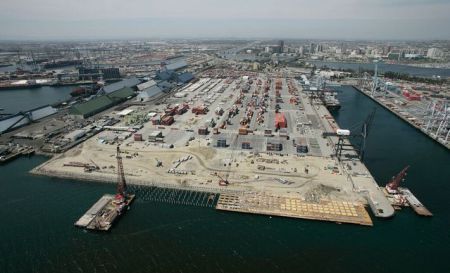
In a recently completed survey that the American Association of Port Authorities (AAPA) initiated, U.S. seaport agencies and their private-sector partners plan to invest a combined $46 billion over the next five years in wide-ranging capital improvements to their marine operations and other port properties.
While port authorities and their business partners are making major investments into port facilities, studies show the intermodal links—such as roads, bridges, tunnels and federal navigation channels—to access these facilities get scant attention by state and federal agencies responsible for their upkeep, resulting in traffic bottlenecks that increase product costs and hamper job growth.
To help remedy these problems, AAPA continues to advocate for a national freight infrastructure strategy and for the U.S. Congress to quickly pass a reauthorized multi-year transportation bill that targets federal dollars toward economically strategic freight transportation infrastructure of national and regional significance.
“Infrastructure investments in America’s ports and their intermodal connections – both on the land and waterside – are in our nation’s best interest because they provide opportunities to bolster our economic and employment recovery, help sustain long term prosperity, and pay annual dividends through the generation of more than $200 billion in federal, state and local tax revenue and more than $22 billion in Customs duties,” said Kurt Nagle, AAPA president and CEO. “From a jobs standpoint, America’s seaports support the employment of more than 13 million U.S. workers and create 15,000 domestic jobs for every $1 billion in manufactured goods that U.S. businesses export.”
According to economist John C. Martin, Ph.D., president of Lancaster, Pa.-based Martin Associates, U.S. Bureau of Economic Analysis formulas show that investing $46 billion in infrastructure at U.S. ports creates more than 500,000 direct, indirect and induced domestic jobs, accounting for more than 1 billion person-hours of work.
“Those are really significant job numbers,” emphasized Dr. Martin. “From a dollars-and-cents perspective, it’s hard to over-emphasize the value of investing in ports, particularly when you factor in how much these investments help lower the cost of imports and make our exports more competitive overseas.”
Mr. Nagle added that, despite substantial investments by port authorities and their private-sector business partners, inadequate infrastructure connecting ports to landside transportation networks and water-side shipping lanes often creates bottlenecks, resulting in congestion, productivity losses and a global economic disadvantage for America. “These congestion issues and productivity losses have the potential to stymie America’s ability to compete internationally and to create and sustain jobs,” he said.
As recently as 2005, the World Economic Forum ranked the U.S. number one in infrastructure economic competitiveness. Today, the U.S. is ranked 16th, while neighboring Canada is ranked 11th and fast-developing China has risen to 44th. This change in ranking is due mostly to the fact that the U.S. spends only 1.7 percent of its gross domestic product on transportation infrastructure while Canada spends 4 percent and China spends 9 percent. Even as the global recession has forced cutbacks in government spending, other countries continue to invest significantly more than the U.S. to expand and update their transportation networks.
The following are examples of investments other countries are putting toward transportation infrastructure:
• India plans to invest US$60 billion, including both public and private funds, in creating seven new major ports by 2020 to handle a rapid expansion in exports of merchandise, which is forecast to triple by 2017.
• Brazil expects tonnage at its coastal ports to more than double, to 1.7 billion tons by 2022, and has committed US$17 billion, including US$14 billion from the private sector, for port improvements.
• The world’s fourth largest marine terminals operator, DP World, plans to spend US$2.5 billion on London’s Deep-Water Gateway, the United Kingdom’s first such development in the last 20 years.
AAPA completed its 2012 infrastructure investment survey at the end of May. The following is a regional breakdown of survey respondents:
We use cookies to improve your experience. By continuing to use our site, you accept our Cookies, Privacy Policy,Terms and Conditions. Close X